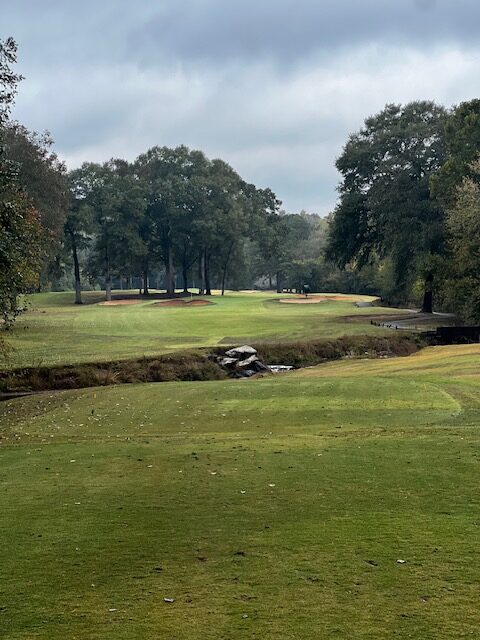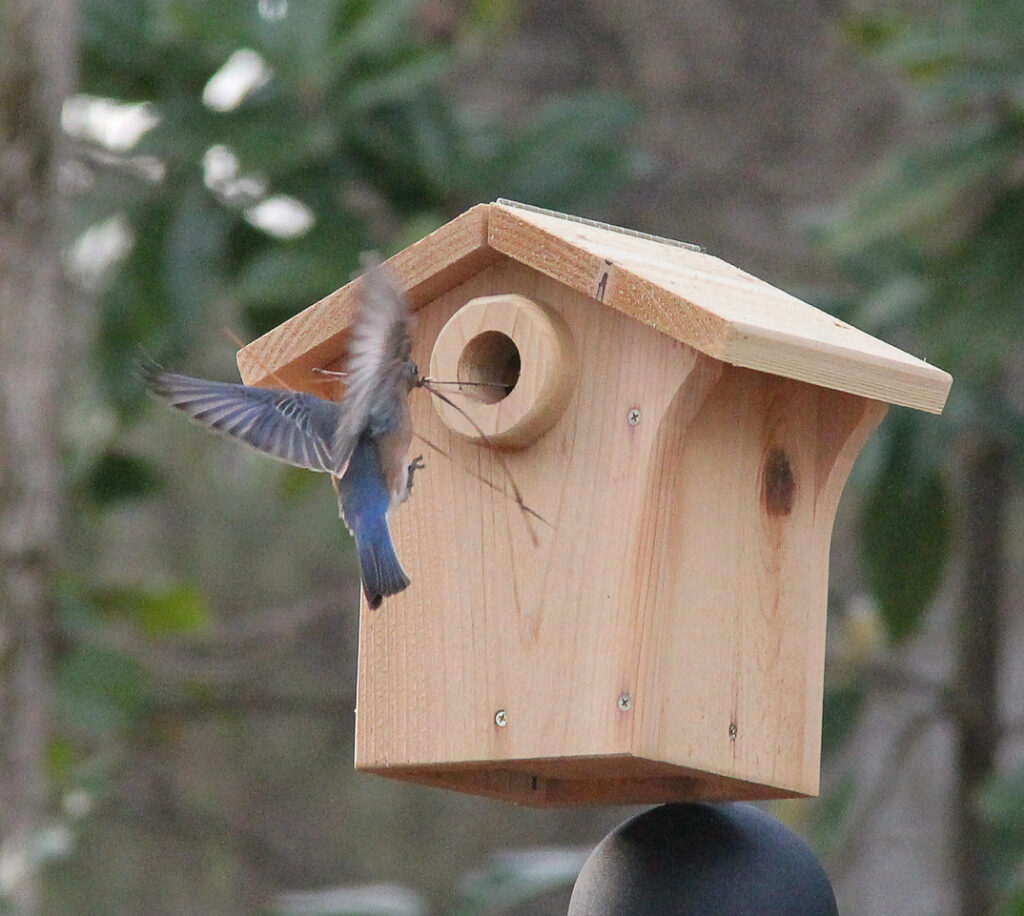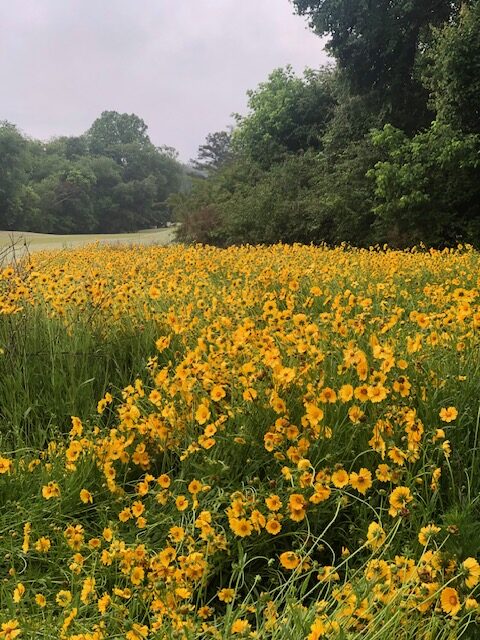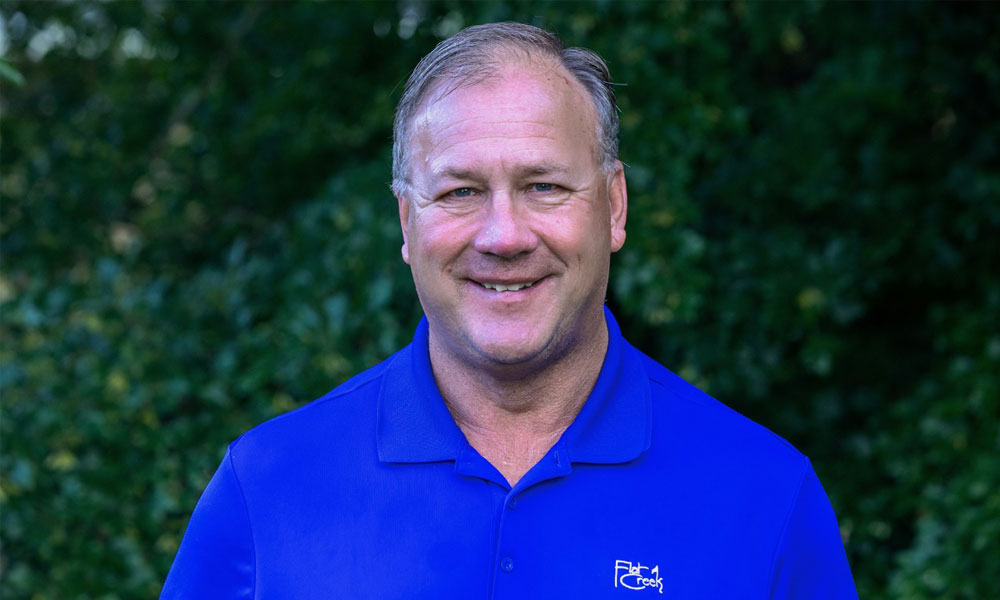Now operated by Invited Clubs, Flat Creek Country Club initially opened with 18 holes in June 1968. An additional nine holes added in the early 1980s. The course was designed by Joe Lee and features an 8,000 square-foot practice green adjacent to the pro shop, as well as a separate practice chipping green a short distance away. The greens are Bentgrass, which provide a great putting surface all year. The driving range boasts several target greens and consists of 10 acres with a 1½-acre teeing ground, including one acre specifically designated for member use.
As the son of a golf course superintendent, Ammons spent much of his childhood working summers on the course doing small jobs, mostly fixing ball marks and hand raking bunkers. His mode of transportation was my feet–he walked the course since he was too young to drive the equipment. “I never envisioned making the golf course my career at that point,” he says. “But as I got older it became for evident this is what I was supposed to do.” After working several years the local country club, he applied for the assistant superintendent position at Flat Creek in 1987 and was hired. Upon the departure of the previous superintendent in June 1988, he was appointed to the role of superintendent, a position he has held for 36 years.
What motivated your club to join the Audubon International Cooperative Sanctuary Program (ACSP) for Golf?
In 2016, our company vice president of agronomy started an initiative for all courses to apply for Audubon Cooperative Sanctuary for Golf (ACSP) Certification, a distinction that highlights our commitment to environmental stewardship and conservation initiatives within our community. We successfully achieved certification in October 2017, showcasing our dedication to sustainability and resource management. We are proud to have leveraged the resources and programs provided by Audubon International to enhance the sustainability of our course and beyond. We have also taken part in Audubon International’s Monarchs In The Rough program since its inception.

What did it take to achieve ACSP certification – how long was the process and what steps were involved?
Flat Creek Country Club has made an investment in obtaining ACSP certification, which we have maintained since 2017 through two recertification processes. The process took us a little over a year to complete and can be accomplished sooner provided you dedicate more time. This rigorous program involves various stages, including environmental planning, wildlife habitat management, water management, and precise documentation of chemical usage and reduction. We have enlisted the support of community volunteers and members in our Audubon International initiatives, which is crucial to the success of our program. Additionally, we collect water samples at various points, upstream and downstream, to monitor any potential effects of the golf course on waterways. While maintaining certification requires diligence, it becomes a fulfilling and a sense of accomplishment when you’re passionate about the work and dedication to environmental sustainability.
Related: Exclusive Interview: Donald A. Cross Certified Superintendent at Skokie Country Club

What did it cost to earn certification all-in and what were the biggest expense items?
Being certified requires an investment in time and effort. We also budget $1,500 yearly to maintain and introduce new programs particularly when it comes to managing projects like bluebird box nesting, honeybee hive inspection, and wildflower cultivation. Additionally, the recertification process involves rigorous audits that further test our dedication to the program, but these challenges are essential in maintaining the high standards associated with certification.



What were / are the most challenging aspects of being certified and maintaining the standards required to achieve and retain that status?
Maintaining certification and adhering to its stringent requirements can be challenging, primarily due to the significant time commitment necessary to ensure the success of projects. The recertification process, which involves regular audits, further adds to the difficulty of upholding the prestigious title. However, these challenges are necessary to ensure the efficacy and reputation of the program.
Related: The Audubon Cooperative Sanctuary Program for Golf
What specific benefits are you reaping from being a Certified Member?
I strongly suggest acquiring ACSP golf certification for superintendents who already possess a passion for the outdoors and nature. Since you are already executing many of the necessary tasks for the program, adding some accountability and determination can lead to significant success and benefits. I recently received the environmental leadership in golf award from the Georgia golf environmental foundation, a prestigious honor that recognizes efforts to promote wildlife habitat and places your name alongside other distinguished individuals.

What would you share with other superintendents and course managers who are considering joining the Audubon International ACSP program?
Superintendents with a love for nature and the outdoors should consider obtaining ACSP golf certification. By building on your existing efforts and adding a layer of accountability, you can achieve success and be recognized for your environmental leadership. We set the standards for the future, today.
What is the best guidance or tip(s) you have received pertaining to being a superintendent and overseeing the golf course agronomy/maintenance department? And from whom?
I can confidently say that my father, a seasoned superintendent with 20 years of experience, played a significant role in shaping my success at Flat Creek Country Club. His guidance and expertise were invaluable to me, and I would often seek his advice whenever I had questions or challenges. Unfortunately, he is no longer with us, but his legacy lives on through the knowledge and guidance he bestowed upon me, which has contributed to my 36 years of success here at Flat Creek Country Club.
Photos courtesy of Harold Ammons/Flat Creek CC/City of Peachtree



























